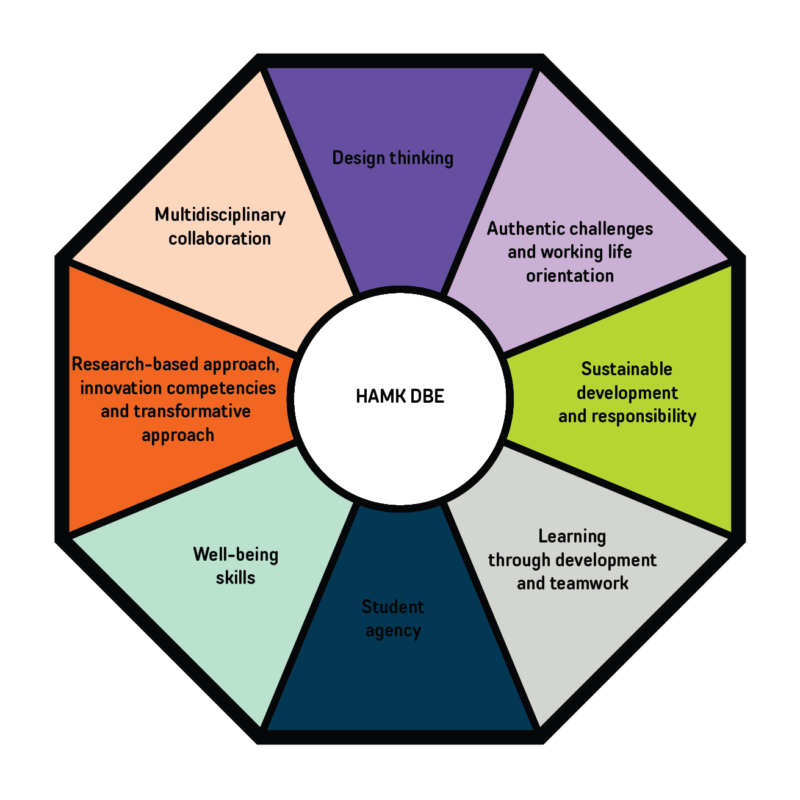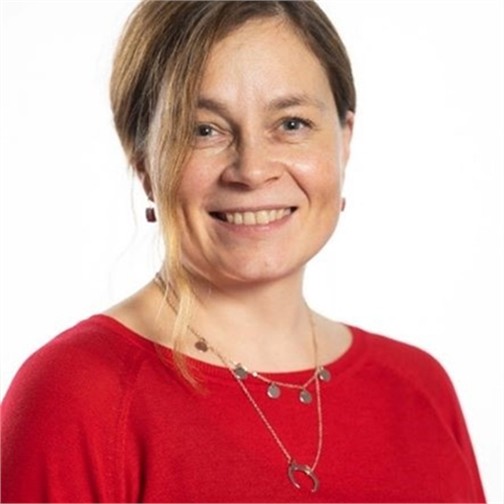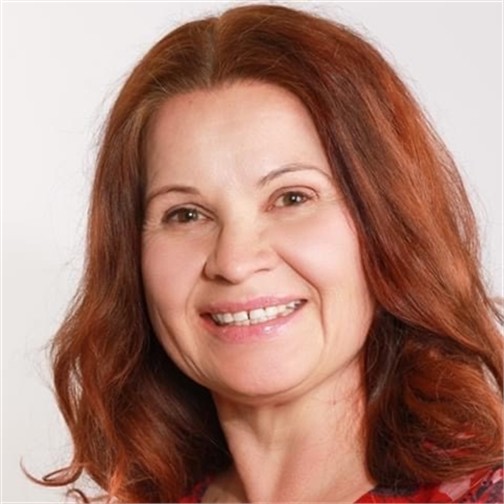In the rapidly evolving world of work, complexity, diversity, and constant changes are shaping the demands on vocational education and professional teacher education. The optional course Wicked Problems of Educational Institutes, conducted at Häme University of Applied Sciences (HAMK), sought to respond to this complexity. This article reflects on the implementation and outcomes of the Wicked Problems of Educational Institutes course, focusing on how teacher students experience and apply design thinking in multidisciplinary and international collaboration. It examines the pedagogical impact of the course and considers its potential for future development and internationalization in teacher education. The course engaged teacher students in multidisciplinary teams to solve real-life challenges by using the design thinking method and by creatively applying theoretical knowledge into practice. Through a structured process of empathizing, defining, ideating, prototyping, and testing, students co-created innovative and sustainable solutions, such as new approaches and new ways of thinking in professional education. During the course, the teacher students developed essential future competencies, including design thinking, transversal skills, and 21st-century skills needed in modern educational environments. Assessment of this course focused on documenting the learning process and demonstrating how design thinking principles are applied. As a result of these studies, the teacher students are expected to develop their field-specific expertise, justify their solutions with theoretical grounding, and reflect on the sustainability in their outcomes. Also a self-assessment was included in the student team’s final documentation in order to support personal growth and deeper understanding.
Introduction: Why a new course and collaboration model?
To better turn the challenges of the changing world and education into opportunities and to address future skills needs – for example, 21st-century skills such as critical thinking, creativity, collaboration, and communication (OECD, 2025) – we must engage in multi-professional and multidisciplinary collaboration. In vocational institutions, the most natural activity is to collaborate with all stakeholders, including teachers from various fields, study counsellors, special needs teachers, students, school management, and representatives from the world of work. In addition to this, collaboration between different educational institutions is essential.
A key goal of teacher education at HAMK’s Professional Teacher Education programme is to train future experts. Among the most critical skills in the future is the ability to solve problems and collaborate in multidisciplinary and interdisciplinary teams. We seek to promote the development of these skills by incorporating into our teacher education courses such elements which allow the participants to concretely develop their competence in both national and international work contexts.
HAMK created the course Wicked Problems of Educational Institutes to support international collaboration within the Regional University Network – European University (RUN-EU) alliance. This alliance of ten higher education institutions from nine different countries provides a framework for close international cooperation. As multicultural and international teamwork broadens perspectives and helps to address educational challenges from a global point of view, one goal of this course was to make it easier for teacher education students to take part in international exchange during their studies. Since many of these students work and have families, the process needed to be smooth and easy to manage, so adding the course to the curriculum and building a clear structure aimed at making international mobility more accessible. This was made possible by HAMK’s collaboration with the teacher education departments of the NHL Stenden University of Applied Sciences in the Netherlands and the University of Burgos in Spain. In essence, this means that students can complete part of the course at a partner university abroad and work together with European teacher students. This makes it possible to offer educators valuable international experience and mobility, and it provides an opportunity to share best practices and create joint solutions to challenges common to different countries’ education systems.
In addition to the international implementation, a version of the course was also offered in Finnish in cooperation with HAMI, a vocational institute from Hämeenlinna. Recognizing that multidisciplinary and multi-professional collaboration is a vital element in the work of professional teachers, HAMK chose to offer also this Finnish version of the course. This Finnish-language version of the implementation provided an opportunity for students who felt more confident participating in Finnish. Although the English and Finnish courses were implemented separately without a common start date, the course planning was done in collaboration, and the participants had discussions throughout the process. Both implementations made it possible to work face-to-face and online.
Pedagogical development: DBE and design thinking
The new course, Wicked Problems of Educational Institutes, is built at HAMK on the pedagogical model of DBE, design-based education (HAMK, 2025). The course provides a multidisciplinary learning environment where teacher students apply the design thinking method to solve wicked problems in the field of education. In this course, wicked problems refer to everyday challenges in vocational education – such as lack of student motivation, classroom disruptions, inappropriate behaviour, or difficulties in multiprofessional collaboration – that are complex, context-dependent, and require creative and user-oriented solutions. This new multidisciplinary course was offered to all professional teacher education students at HAMK, including students in professional teacher education, professional special needs teacher education, and professional guidance counselling programs. The course makes use of work by Hero and Sunimento (2025), according to whom the innovation capacity of higher education students can be enhanced by multidisciplinary cooperation and collaborative development.
Design-based education aims at learning by co-creating new, practical and user-oriented solutions to real challenges that arise from industries, organizations and the society at large. This collaborative approach has been seen as beneficial for both teacher education students and employers of teachers, such as vocational institutes, universities of applied science, and other stakeholders in the field of professional education (HAMK, 2025). Overall, the goal of design-based education is to cultivate future-proof innovation skills and advanced workplace competencies for new teachers.
In the context of this course, using the design thinking method means teaching through open-ended challenges that enable creative, innovative, and sustainable solutions. These solutions may include new services, operating models, products, or innovative ways of functioning. In this kind of teacher education, multidisciplinary teams have been found to provide a sufficiently challenging learning experience and generate creative and forward-thinking solutions (Hero et al, 2025), when the teams can use their diverse expertise.

The DBE approach at HAMK is built on eight core principles (Figure 1) that integrate design thinking with real-world collaboration. The collaboration partners in this case are the educational institutes, and this approach emphasizes teamwork within multidisciplinary groups, creating solutions that are sustainable and socially responsible. Another key element is that students take an active role and responsibility for their own learning, while teachers support and facilitate this learning process. Furthermore, the DBE approach supports well-being by creating a fair and supportive environment for everyone. Overall, DBE is based on research and innovation where students explore problems in depth, create new ideas, and collaborate across different teacher education programs to keep learning relevant for today’s labour market needs. As Jussila et al. (2022) emphasize, design thinking is an iterative process, meaning that the solution does not always emerge through a linear approach. In this course, this iterative process meant that students repeatedly cycled through the design thinking phases as they deepened their understanding of the challenge and the context. When new insights emerged or solutions proved unsuitable, they returned to earlier stages of the process – such as the stages of empathizing or redefining the problem – to refine ideas and in this way developed more effective, context-appropriate outcomes.
Pedagogical foundation and key approaches
As Jussila et al. (2022) note, an iterative process and encouraging creative solutions are central to learning through design thinking. The goal is to strengthen the teachers’ innovative thinking and provide a concrete understanding of how the design thinking process can be applied to the development of teaching. During the course, the collaboration with vocational institutions and representatives from the world of work helped to ensure that the developed solutions will also meet practical needs.
In the Wicked Problems of Educational Institutes course, the teacher’s role shifted from a traditional instructor to that of a facilitator, challenger, and encourager (Hero et al., 2024). In practice, the teacher ensured the progress of the design process and rather than delivering content, guided the teacher-student teams through their design thinking projects, asking probing questions to challenge assumptions and encouraging creative risk-taking. By acting as a supportive coach, the teacher promoted a safe, collaborative atmosphere while making sure that the process stayed on track and aligned with the course’s learning objectives. This approach follows design-based education pedagogy where the role of the teacher is generally understood as that of a supporter and co-creator in the learning journey, helping students develop design thinking skills and become more innovative in solving wicked problems.
Experiences from learning with authentic wicked problems
As the course progressed, it became evident that the wicked problems faced by educational institutions are truly global. Representatives from vocational institutes provided the authentic, work-based challenges that needed solutions, including challenges such as students’ lack of motivation, providing support for diverse learners, and facilitating collaboration between teachers. Examining these issues reinforced the understanding that teachers increasingly need creativity and learning design skills to strengthen their professional competence.
The teacher students collaborated with three vocational institutes, two from Finland and one from the Netherlands, to tackle these real-world wicked problems. The work started in January 2025 by representatives from these institutes presenting the problem and meeting with the students. In terms of the design thinking framework – which begins with the empathize stage (Jussila et al., 2022) – this initial stage was focused on the teacher students engaging directly with the representatives of the vocational institutes to gather detailed insights and gain a better understanding of the needs behind the problem. At this stage, the teacher students were presented with wicked problems to solve at vocational institutions in the five following areas:
- Rapid adoption of digital tools in teaching: Teachers are expected to quickly learn new digital tools like AI and VR and use them in all subjects, which can be difficult to master alongside their regular teaching work.
- Persistent nicotine use and damage to shared spaces: The vocational institute is working to improve the overall comfort and cleanliness of its campus. A key challenge is to address the ongoing use of nicotine products and occasional damage to shared spaces, despite a smoke-free policy.
- A low student motivation and frequent absences: Many students have low motivation and are frequently absent, often due to personal issues like irregular sleep or other life-management problems. The challenge is to re-engage these learners by helping them overcome their personal challenges and by providing individualized learning paths.
- Smartphone use that limits student interaction: Students often spend their breaks glued to smartphones out of boredom, which limits face-to-face interaction and detracts from a lively campus atmosphere.
- Gaps in multi-professional collaboration: Multi-professional experts in vocational institutes often lack clarity on whom to contact for timely, well-targeted support for students’ needs and for their own collaboration needs. This uncertainty makes it difficult to ensure quick and appropriate responses across the support network.
While this is the basic outline of the wicked problems and the solutions that the teacher students’ discussed on the course, in our follow-up article (van der Leiji et al., forthcoming) we provide further insights and reflections on the course implementation.
Impact and future outlook
The Wicked Problems of Educational Institutes was a pilot course that provided an excellent example of multidisciplinary and multi-professional cooperation in an international context. For us course teachers – or rather mentors – the collaboration was beneficial because we learned a lot from each other about both methods and working approaches. As lecturers in teacher education, the course also provided us with a valuable opportunity for international collaboration. The joint implementation across RUN-EU universities highlighted how global these kinds of wicked problems are, and how, as teachers, we face similar challenges regardless of the country. Such cross-border collaboration can help to strengthen professional networks as it fosters trust among educators and in this way also supports the future development of pedagogical practices.
The students who participated in the course had an excellent opportunity to work in English on common issues and in a multicultural environment. They were able to solve and develop solutions together in multidisciplinary teams and they had the chance to learn communicating in a solution-oriented way, both online and in live meetings. The international and vocational cooperation that the course was based on also helped the students to experience a variety of learning environments, both in the context of the challenges to be solved and during the visiting weeks that were part of the co-development process.
During this course, these teacher education students experienced many of the same challenges of group dynamics and learning that their own future students will face. These included cultural differences, scheduling difficulties, balancing personal life and work with international teamwork, and navigating the diverse institutional cultures and academic calendars of partner universities. As part of the course conclusion, the teacher students engaged in a reflective discussion on their learning experiences. In this discussion, they recognized the fact that they encountered many of the same challenges – such as managing group dynamics, navigating language barriers, and balancing personal responsibilities – in which they will need to help their own students in vocational education. They also noted that they could have made better use of digital tools to support international collaboration, particularly in areas such as ideation, overcoming language challenges, and documenting the process. These reflections highlighted how global challenges in education – for example, inclusivity, communication, and digital fluency – are shared across contexts and learner groups.
The overall experience from the course was that its clear structure, schedule, and collaborative format made international exchange a smooth, well-integrated part of the program for teacher education students. Such cooperation is made possible through initiatives like Erasmus+ and the RUN-EU alliance where participants can complete a portion of the course at a partner institution abroad, with Erasmus+ grants available to cover travel expenses. At the same time, for HAMK as one of the participants, it became clear that this type of an internationally collaborative model for organizing courses brings an international dimension to our own campus, as students and staff engage with global peers and perspectives.
References
- HAMK. (2025). Design-based education. https://www.hamk.fi/en/about-hamk/pedagogical-research-and-development/design-based-education-dbe/
- Hero, L-M., Galiot, R., Jussila, J. & Sokka, S. (2024). Becoming a DBE teacher. Teachers’ understanding and needs at the beginning of the transition to design-based education. HAMK Unlimited Scientific. https://unlimited.hamk.fi/ammatillinen-osaaminen-ja-opetus/becoming-a-dbe-teacher-teachers-understanding-and-needs-at-the-beginning-of-the-transition-to-design-based-education/
- Hero, L.-M. & Sunimento, M. (2025). YAMK-opiskelijoiden innovaatio-osaaminen sekä siihen liittyviä kehitystarpeita ja toimenpide-ehdotuksia. HAMK Pilkku. https://doi.org/10.63777/301f
- Jussila, J., Raitainen, J. & Tuomela, V. (2022). Design thinking in HAMK Design Factory. HAMK Unlimited Professional. https://unlimited.hamk.fi/ammatillinen-osaaminen-ja-opetus/design-thinking-in-hamk-design-factory/
- Jussila, J., Siintoharju, S.-M., & Galiot, R. (2023). Design thinking mindset and some common misconceptions. HAMK Unlimited Journal. https://urn.fi/URN:NBN:fi-fe20231122148466
- OECD. (2025). Future of Education and Skills 2030/2040. https://www.oecd.org/en/about/projects/future-of-education-and-skills-2030.html
- van der Leiji, D., Ärling, J., Heino, S. (forthcoming). Beyond the Wicked Problems Journey: Evaluating Impact and International Collaboration in Teacher Education. HAMK Pilkku.
Authors




